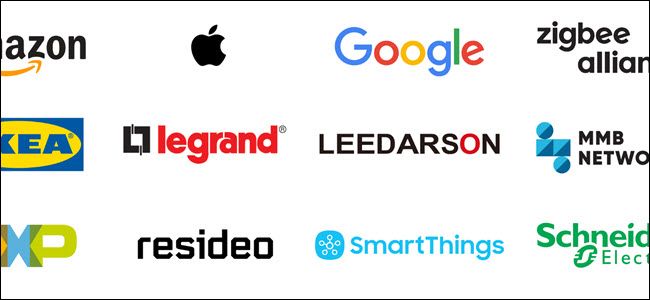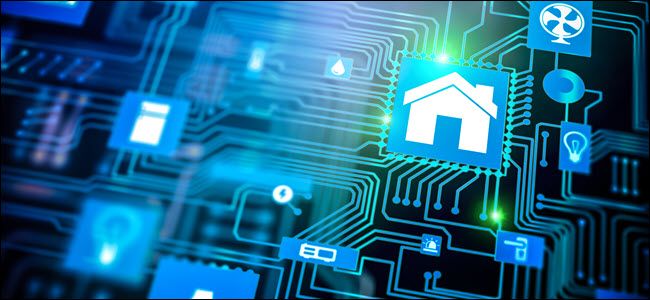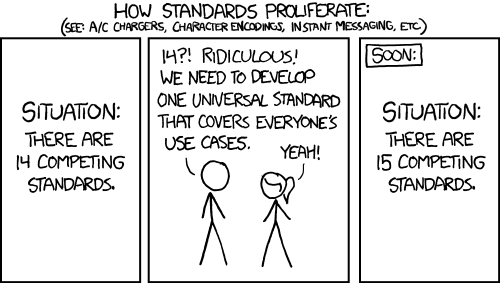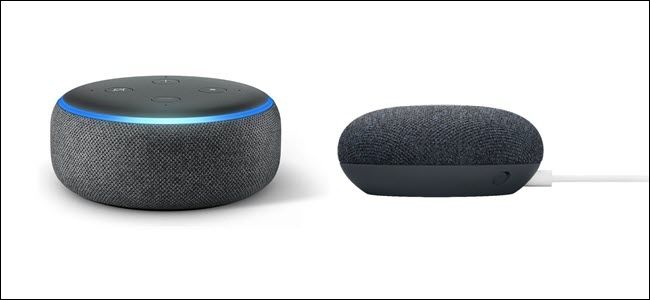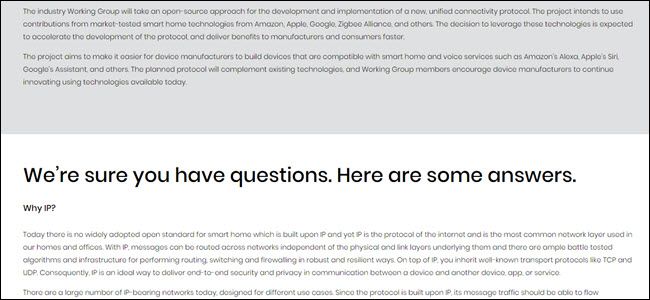Quick Links
Project Connected Home over IP is a new industry group announced by Apple, Google, Amazon, and the ZigBee Alliance. The group will create a new unifying standard for smart home devices, and that's a big deal. Here's why.
As of May of 2021, Project Connected Home Over IP is now known as Matter.
The World Today: Half a Dozen Incompatible Standards
If you're out shopping for smart home products right now, you have a seemingly endless sea of choices to pick through. Even if you've already settled on just buying smart bulbs, you still have to make more decisions and ask more questions.
Should you get a Wi-Fi, Z-Wave, or ZigBee bulb? What about Bluetooth bulbs? Is a hub required to control them? Do you want voice control? If so, would you prefer Alexa, Google Assistant, or Siri? And what about Thread, OpenWeave, and other competing standards? Are you missing out if you don't invest in those?
Each standard has varying benefits and downsides. Wi-Fi smart devices are fast communicating, low latency devices that yield quick response times. But they're also power-hungry and so inappropriate for small coin-cell battery-powered devices like sensors. Thread, on the other hand, is efficient and low-powered, but slower than Wi-Fi. That's perfect for small sensors, but maybe not the best choice for a smart display.
Unfortunately, those standards won't work together either---even when they seem similar. ZigBee and Wi-Fi devices both communicate over the 2.4 GHz spectrum, but they can't work with each other directly.
Most smart gadgets support just one wireless standard, say ZigBee or Wi-Fi, but not both. Others go for a kitchen sink route; for instance, a smart bulb might support Bluetooth and Zigbee and Google Assitant and Alexa. The kitchen sink route might seem beneficial to you, but it also comes with drawbacks.
Manufacturers need to spend extra time and effort to incorporate additional standards. Sometimes that even means adding extra hardware as well. All of that leads to an increased cost for development, which the companies pass on to you.
Each new standard also comes with its vulnerabilities and defects. It's theoretically easy to patch one set of weaknesses, but the difficulty goes up with each additional incorporated standard. That may leave you with unpatched problems if a manufacturer decides it's too difficult or expensive to update your smart gadget. At the end of the day, when you approach creating a network (or anything) a dozen different ways, you end up with dozens of cracks threatening to bring crumbling down.
The Dream of CHIP: One Standard to Rule Them All
The Project Connected Home over IP (we'll call it CHIP) working group wants to solve this problem by relying on an existing and tested standard: Internet Protocol (IP). CHIP's goal isn't to replace Wi-Fi or ZigBee or Thread, but bring the best of those protocols together under one shared umbrella.
Right now, if a manufacturer wants to create a networking device, like a Wi-Fi router, or ethernet card, they rely on Internet Protocol (IP) as a unifying standard to tie everything together. IP has been around for ages, and manufacturers understand its benefits and security needs. That's a boon to you because that drives down the hardware costs and increases security. That's why CHIP wants to rely on IP for its unifying standard.
It's important not to confuse IP for Wi-Fi or other networking hardware; it doesn't have to rely on a specific spectrum or set of chips. If CHIP can create and encourage adoption of this new standard, then devices built with ZigBee or Wi-Fi or Bluetooth radios could, in theory, adopt the same unifying standard. Manufacturers, in turn, would need fewer resources to create smart home products and to maintain them.
The idea isn't necessarily new; the Thread group has been working on a similar concept for a while now. Grant Erickson, president of Thread Group, seems positive about the developments. He told us in a statement:
We at the Thread Group feel validated on two fronts. First, to create this unified app-layer protocol Project CHIP is taking the same IP-based approached Thread Group used, and second, they've designated Thread as a network layer for low power devices. We believe that this effort will confer tangible, meaningful benefits to both product manufacturers and consumers alike. We look forward to seeing what true convergence can bring to the market.
And he's right. If all devices use the same IP standard, you won't need to worry about Wi-Fi, ZigBee, or Bluetooth. On the consumer level, connecting the device to your smart home should work the same regardless of the radio involved. And the manufacturer will choose the radio that makes the most sense for the use case scenario, without worrying about the difficulty of implementation.
In other words, the dream of CHIP is that you'll be able to buy smart home devices, and they'll "just work" with whatever you use, whether that's Amazon Alexa, Google Assistant, Apple Siri, or another assistant or interface.
CHIP Won't Replace Your Interface
CHIP has two goals. First, it wants to make manufacturing secure and cross-compatible smart devices easier. Second, it wants to make smart devices more accessible to consumers.
That means most of the work will be in the background. Just like you don't pay attention to how your car engine works, or how your Wi-Fi network works, you won't pay attention to how your smart lock communicates with your smart blinds.
Since all that work is in the background, your interface won't change. If you use Google Home or Alexa to control your smart devices, you'll continue as you always have with no real noticeable difference in the experience. CHIP promises that the creation of this standard won't break your current devices, even as you start to acquire new smart home gadgets that are CHIP-enabled. That should help reduce adoption pains.
When Will CHIP Arrive in Consumer Products?
You might be wondering when you will start seeing the standard incorporated into devices. Well, don't hold your breath. All we have now is an announcement of an intention. The standard doesn't exist, and an exact plan still needs to be hammered out. It doesn't even have an official name.
According to the website, "The Working Group has a goal to release a draft specification and a preliminary reference open-source implementation in late 2020." That means developers will start playing with it near the end of 2020 and in early 2021. Actual products that support the CHIP connectivity standard will arrive later.
You can see how early in the process this is by visiting CHIP's website. It's nothing but a wall of text with some proposed thoughts and basic promises. The only images are logos of companies that have signed on.
Even the site itself is a bit of rush job---it's a Squarespace site. Until recently, you could still hit the escape key to reach the Squarespace default login page.
That doesn't mean you should write off the standard as yet another standard that won't bring anyone together. CHIP is backed by some of the biggest names in the smart home world, from Google, Apple, and Amazon to IKEA and Signify (formerly Philips Hue). Apple already announced that it is open-sourcing parts of its HomeKit Accessory Development Kit (ADK) to help the process along.
CHIP's goals are lofty, and smaller groups have tried to accomplish its goal without much traction. But, if the smart home titans can work together long enough to see the process through, this could be the standard that finally makes smart homes accessible to everybody.

